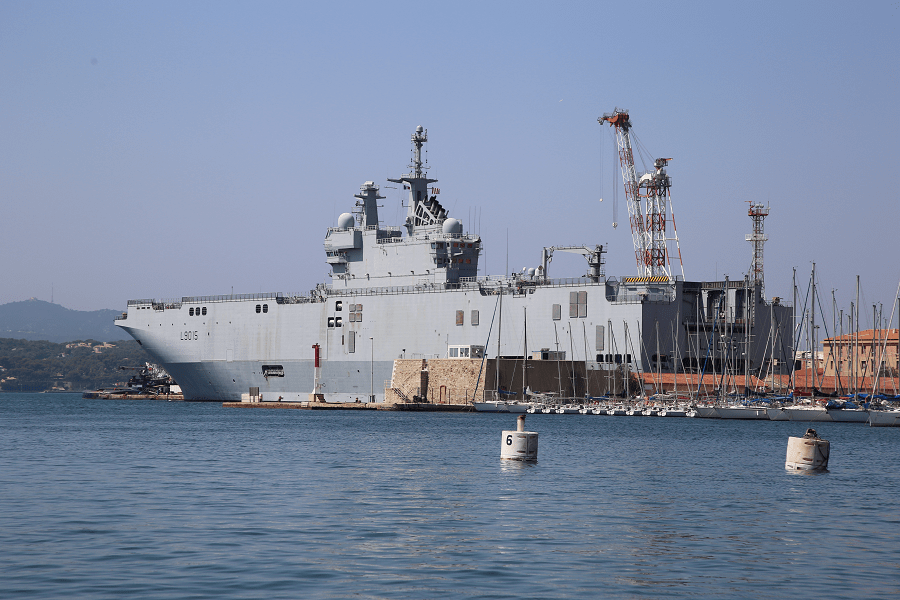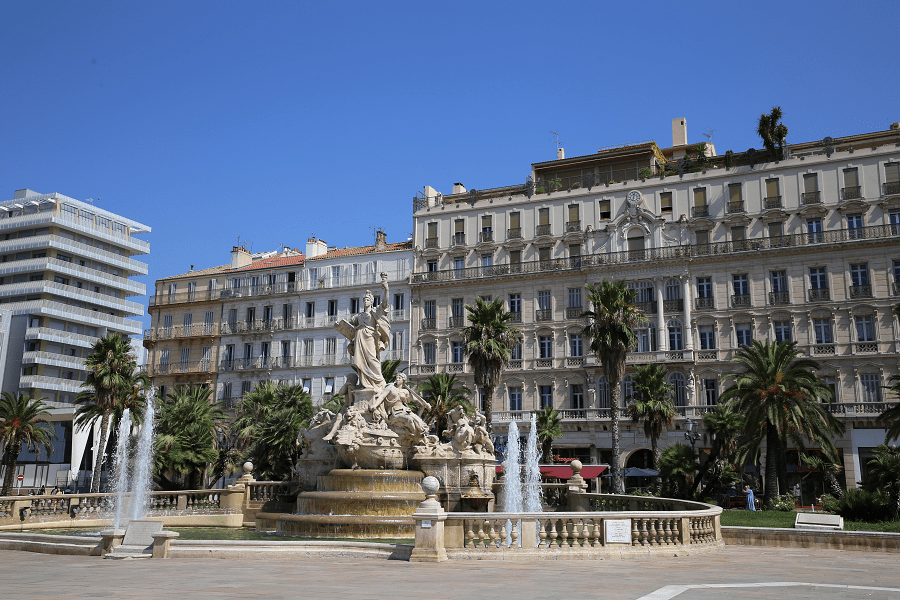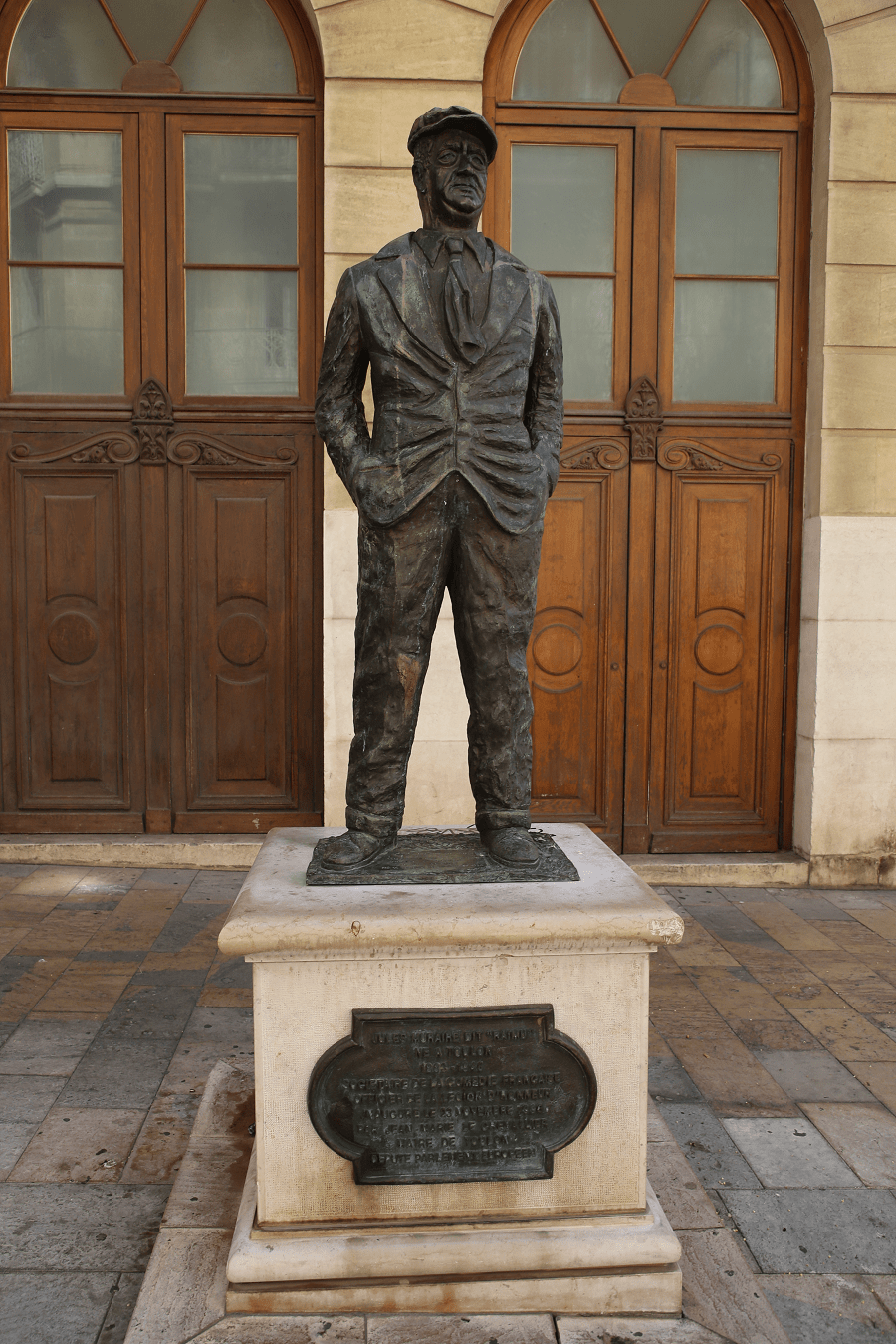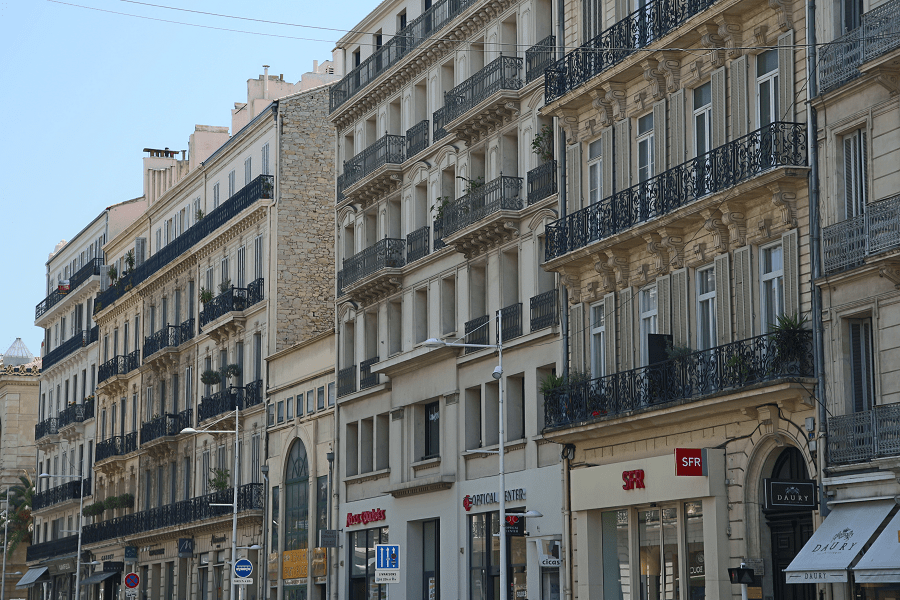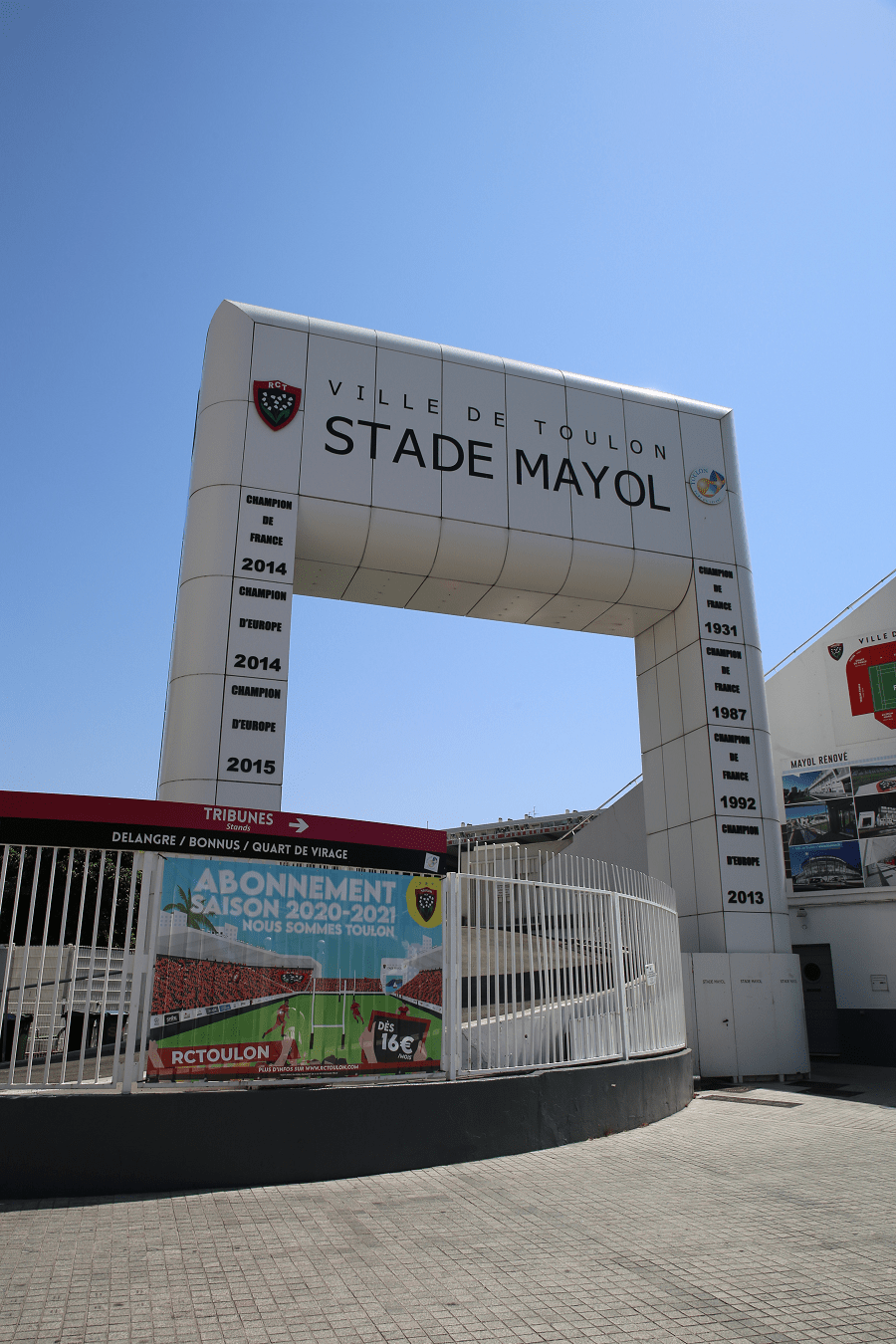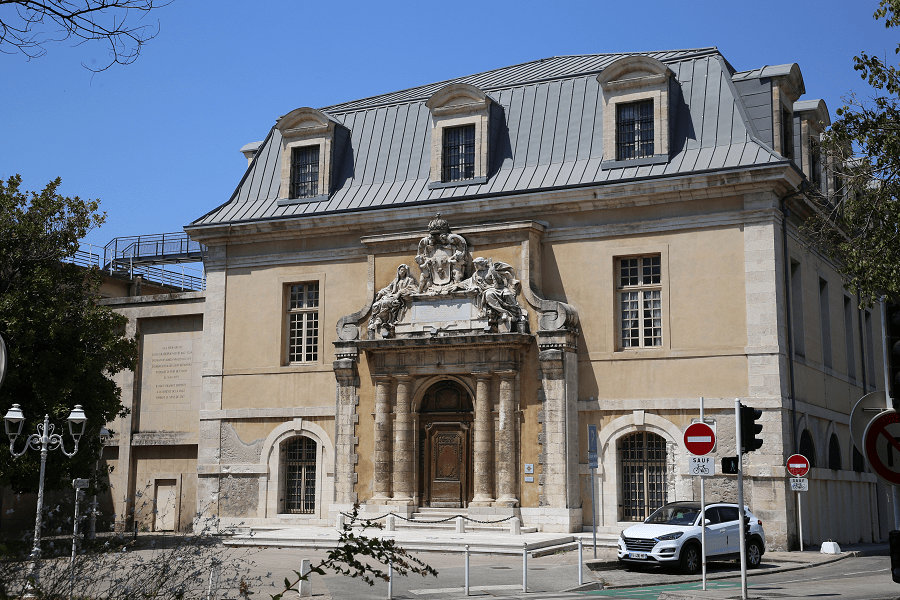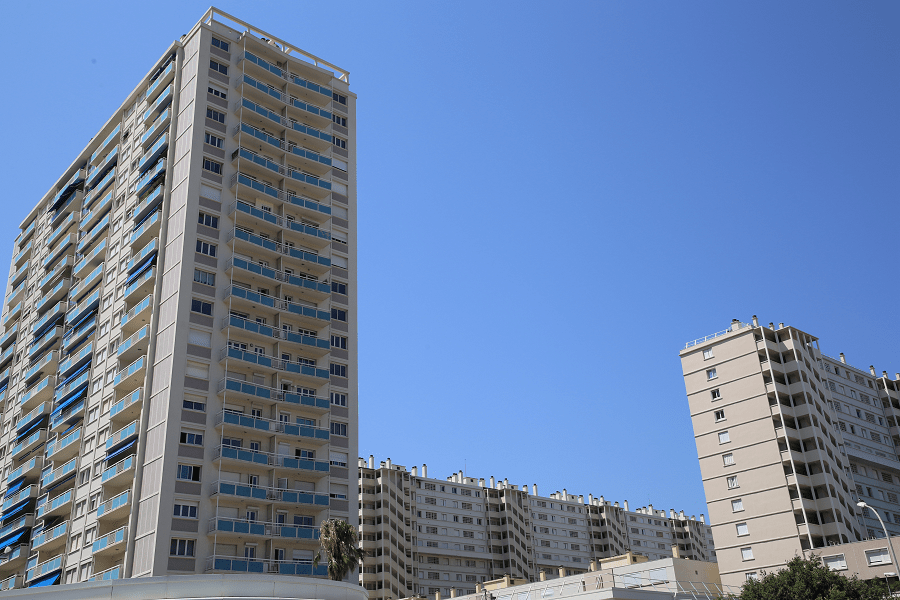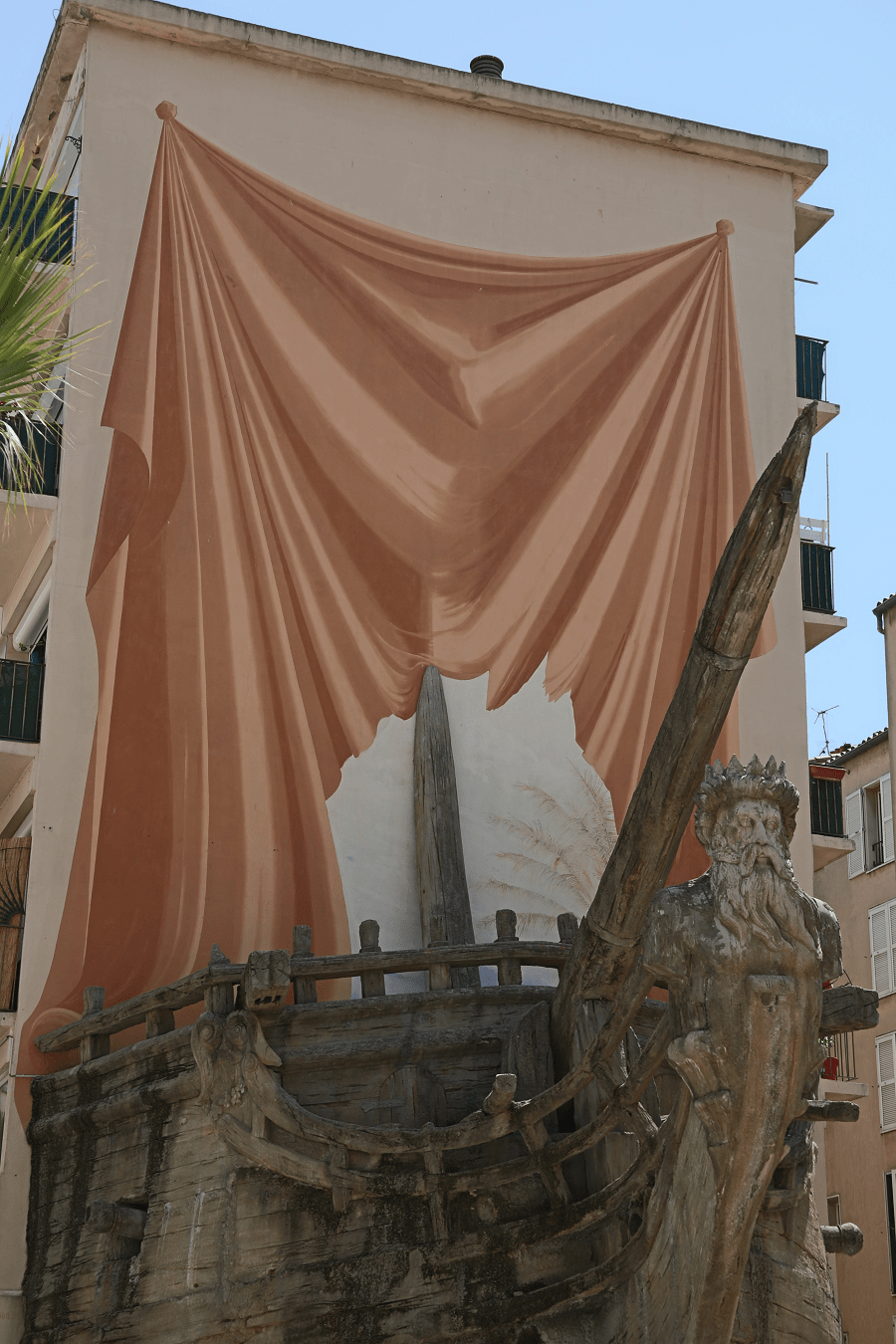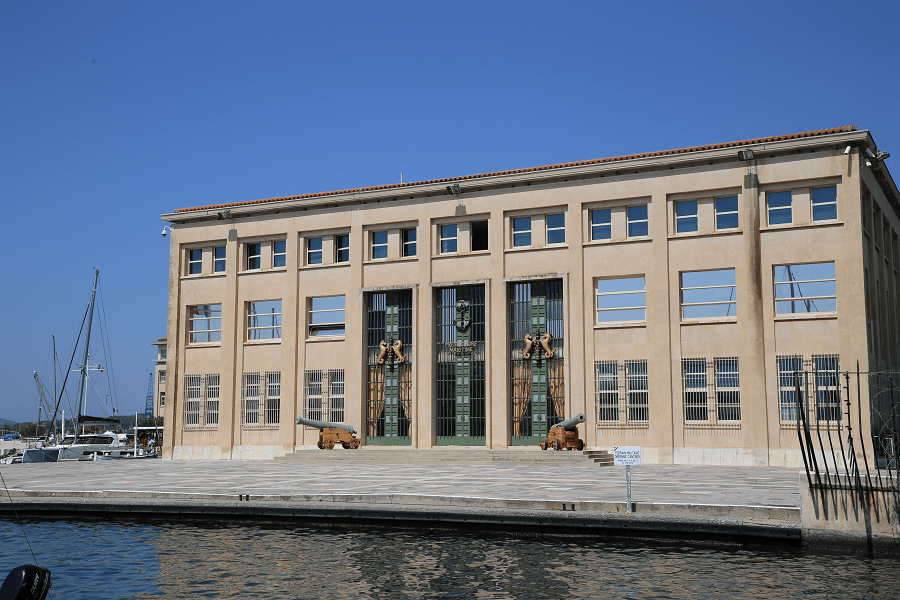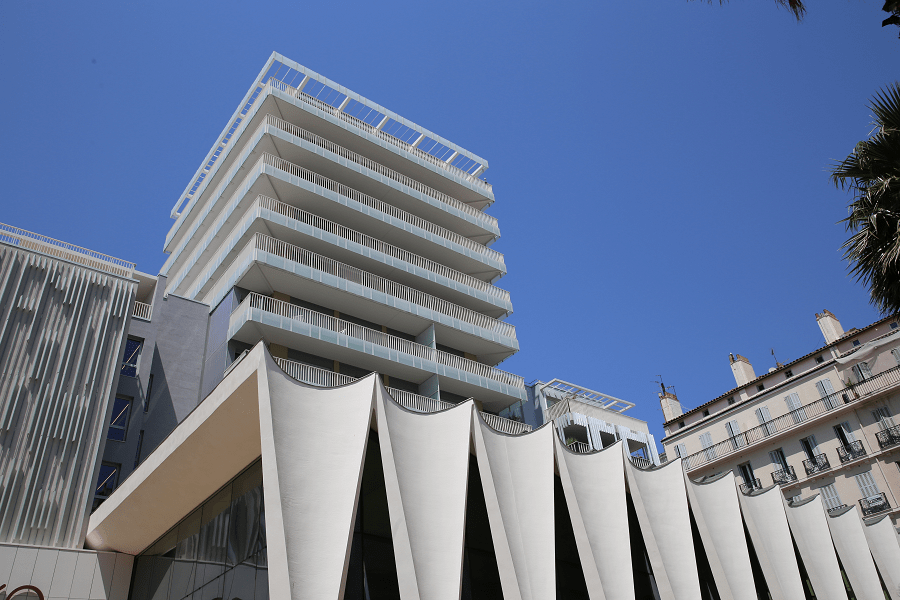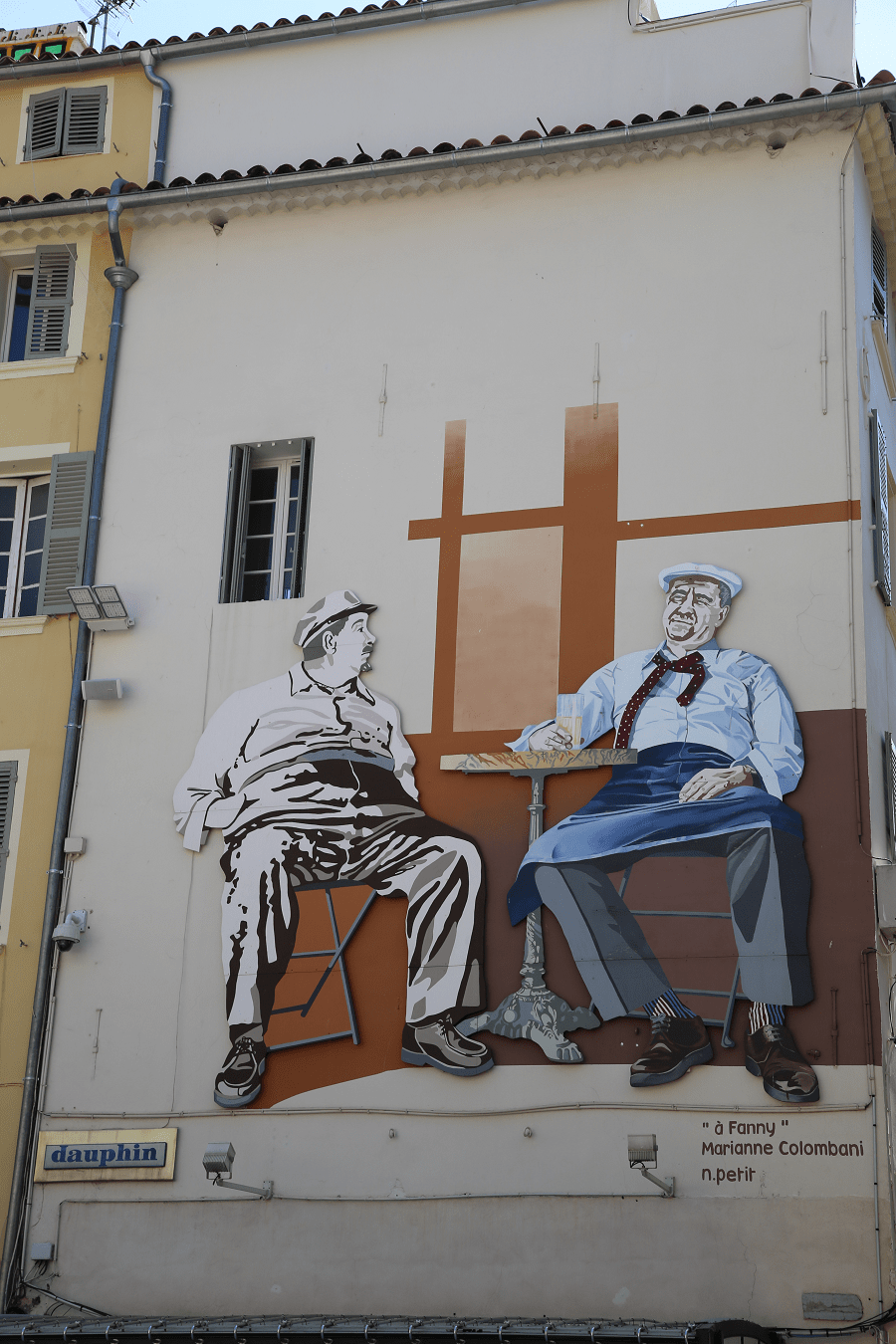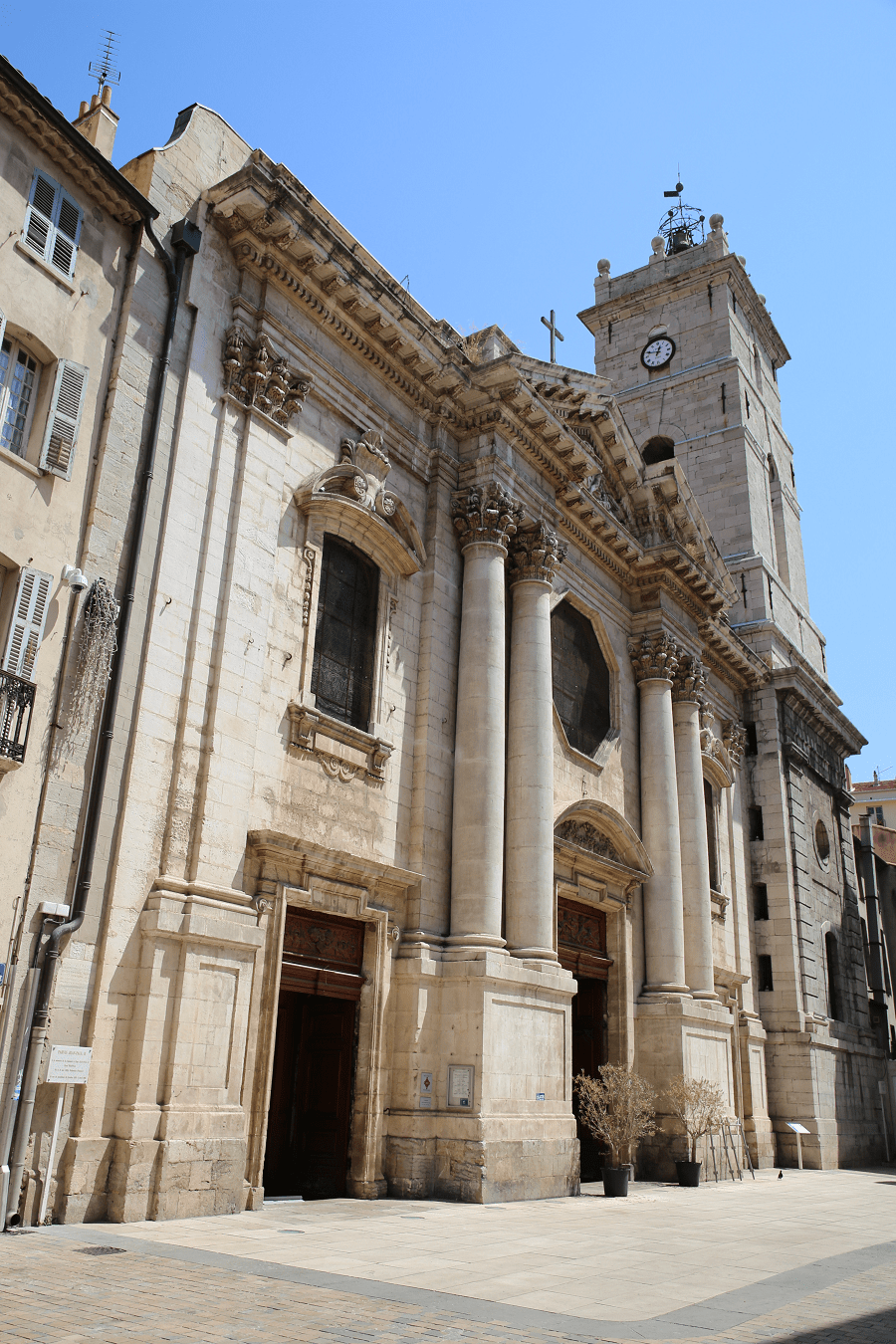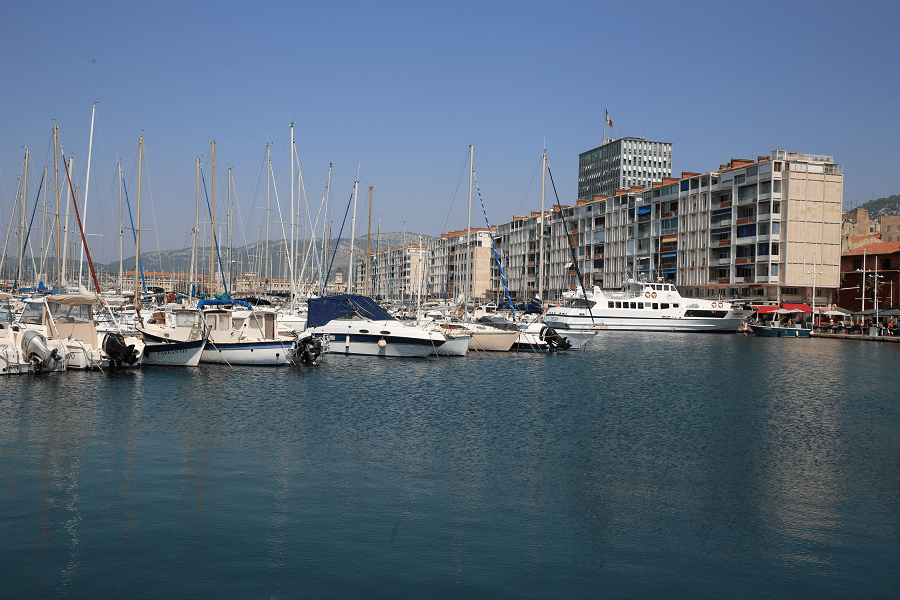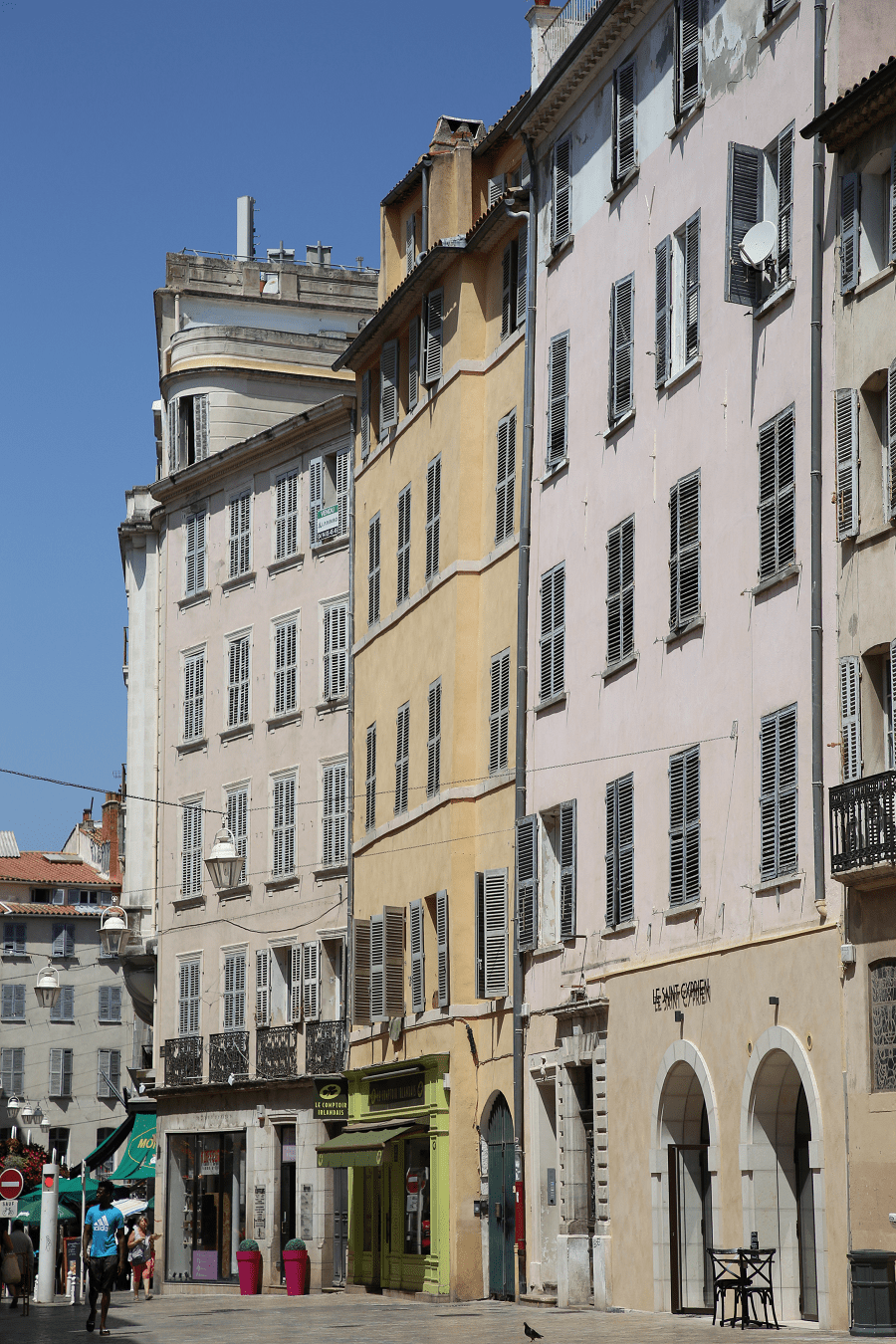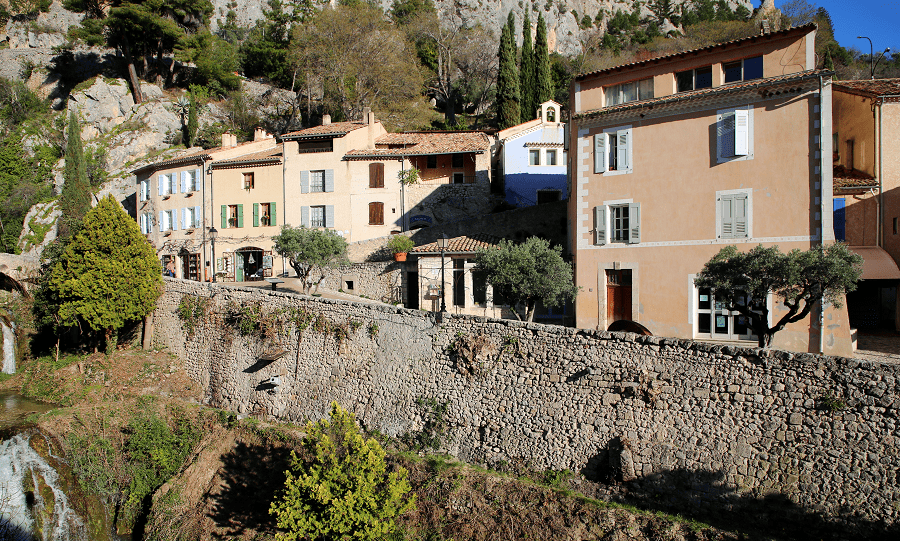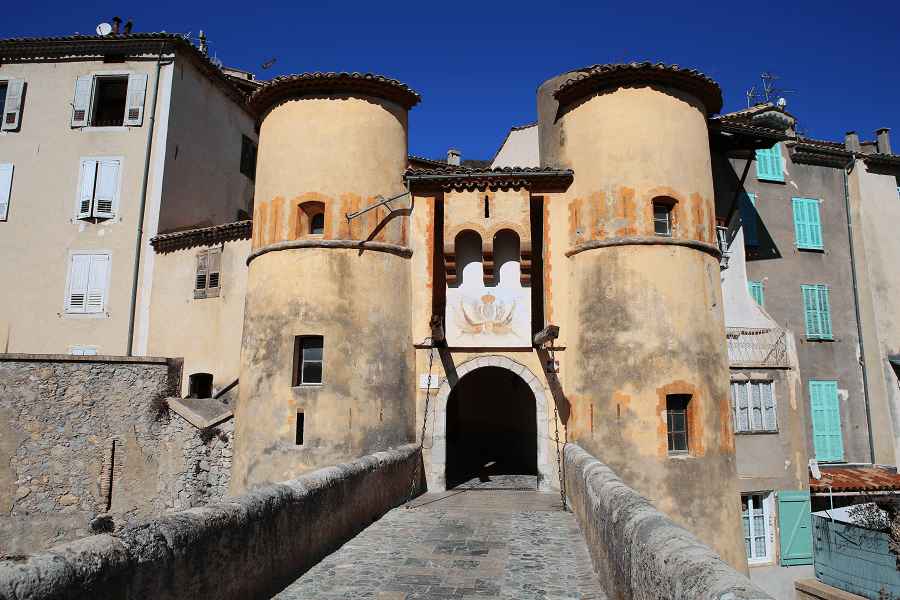Toulon (Fr. Toulon) is a city and a large port on the Mediterranean coast, with a major naval base. Located in the Provence-Alpes-Côte d’Azur region, Toulon is the capital of the Var department. Part of French Riviera.
The military port of Toulon is the major naval centre on France’s Mediterranean coast, home of the French aircraft carrier Charles de Gaulle and her battle group. The French Mediterranean Fleet is based in Toulon.
Toulon has an opera house, a regional national conservatory, several museums, concert halls (Neptune and Zénith-Omega palaces) and a theatre labelled “National Scene”.
Tourism, attractions and what to see?
Toulon has a rich and diversified heritage. The city lists 21 historical monuments, of which seven are classified and 14 registered in the inventory of historical monuments.
Different cults are present in Toulon; the main one is that of the Catholic Church, whose places of worship depend on the diocese of Fréjus-Toulon headed by Bishop Dominique Rey and whose bishopric is on avenue de l’Élisa. Toulon hosts a “Fraternité Saint-Pie-X” community with the Sainte-Philomène church (in Mourillon). After the Catholic Church, the Reformed Church is historically important with its main temple on rue Victor-Clappier in the city centre.
There are also small evangelical communities. The Greek Orthodox Church is present in rue Marius-Andrieu in Bon Rencontre, and the Russian Orthodox Church in Siblas. A small French Orthodox community exists in Aguillon. The Judaic cult has a synagogue on avenue Lazare-Carnot in Saint-Roch and Muslim worship is practiced at the En-Nour mosque, rue Vincent-Courdouan, and at the prayer room, boulevard Ferdinand-de-Lesseps.
Thus, the city hosts a significant number of religious buildings. The Notre-Dame-de-la-Seds cathedral in Toulon which was built in the eleventh century at the instigation of the count of Provence, Gilbert de Boson, who wanted to build a church dedicated to the Virgin Mary. Listed as a historical monument by decree of 16 November 1949, then classified by decree of 14 November 1997, since 1957 it has been the cathedral of the diocese of Fréjus-Toulon, bringing together the dioceses of Toulon and Fréjus.
In 1707, Monsignor Armand-Louis Bonnin de Chalucet decided to build a new church on Place d’Armes to serve the western part of the city in honour of Saint Louis, King of France. It was destroyed and rebuilt on the land expropriated from the Capuchin convent.
Completed on the eve of the French Revolution in 1788, the Greco-Roman inspired building is a major example of neoclassical religious architecture in France.
The Saint-François-de-Paul church, located at the bottom of the Cours Lafayette and a stone’s throw from the port of Toulon, is a Catholic church erected in 1744 on the site of the former royal castle, Casteou de la Mar, for serve as a chapel for the adjoining Récollets convent.
Religious buildings
- Notre-Dame-de-la-Seds cathedral in Toulon (end of the 12th century), co-cathedral of the diocese of Fréjus-Toulon (the bishopric is located in Toulon, district of Beaulieu)
- The Saint-François-de-Paule church (1744)
- The Saint-Louis church
- The church and the former Sainte-Philomène convent in Mourillon
- The Saint-Jean-Bosco91 church
- The Saint-Antoine-de-Padoue church
- The Saint-Pie X church
- The church of Saint-Paul
- The Church of the Sacred Heart
- The Saint-Flavien church
- The Saint-Vincent-de-Paul church
- The organs of religious buildings
- The Sainte-Thérèse chapel in Valbertrand
- The Notre-Dame-du-Cap-Falcon chapel
Military sights
- The Royal Tower (1514), a former fortress to defend the harbor, then a prison until the Second World War
- Fort Lamalgue
- Fort Saint-Antoine
- Fort Saint-Louis
- Fort of Pomets
- Beaumont tower (memorial museum in Provence, inaugurated in 1964 by General De Gaulle)
- Fort de la Croix-Faron
- Fort Faron
Museums
Created at the end of the First Empire and opened to the public in 1814, the National Maritime Museum of Toulon (one of the five annexes of the National Maritime Museum which is located in Paris at the Palais de Chaillot) has been installed since 1981 on Place Monsenergue, next to the clock tower of the arsenal and presents in particular a very important collection of models of ships and galleys.
Inaugurated in 1888, the Art museum exhibits paintings from the Flemish, Dutch, Italian and French schools (sixteenth to eighteenth centuries) and a nineteenth century collection containing works by Provencal painters such as the Toulon landscape painter Vincent Courdouan.
The new Natural History Museum, where visitors can see collections of mineralogy, fossils, as well as reconstructions of dinosaurs and prehistoric men, is in the Jonquet district, in the Jardin du Las. It is classified as a Musée de France, as are the Musée de la Marine and the Musée d’Art (boulevard Leclerc).
The Museum of Old Toulon. Founded in 1912, the Society of Friends of Old Toulon and its Region is an association that manages the Museum of Old Toulon. The museum traces the history of the city and its port. It also houses objects relating to the social, economic, religious, artistic and military history of Toulon. It has in particular an important collection of fireplaces (what remained of the houses bombed in 1943-1944).
Inaugurated in 2001, the Asian Arts Museum is still in the Villa Jules-Verne (a bourgeois house from the beginning of the nineteenth century, in the Mourillon district) and houses collections of Asian arts dating for the oldest from the seventeenth century, presented by geographic origin: China, Japan, India, Tibet, Thailand, Mongolia, Cambodia, Java, Ceylon, Burma and Vietnam-Tonkin.
Installed in a former nineteenth century barracks, boulevard Bazeilles, the Archaeological museum of the Archaeological Center of Var presents everyday objects, works of art, pottery and models retracing antiquity, navigation.
Located in the heart of the old town, the Maison de la Photographie, inaugurated in 2002, is a springboard for artists from the region and is a direct extension of the photographic collection created by Marie-Claude Beaud, curator of the Art museum of Toulon between 1978 and 1982. It has more than 400 works by the main representatives of French photography such as Édouard Boubat, Bernard Plossu and Willy Ronis.
Cuisine and restaurants
Toulon gastronomy is typically Mediterranean. Provence, Liguria and Piedmont strongly influence it. The main dishes that characterize it are bourride, feet and packets, esquinado à la Toulonnaise, quenelles of whiting in Toulonnaise, fritters of courgette flowers, Provençal stew, stuffed, black olives (AOC) , the Toulonnaise cade, the pesto soup, the tapenade, as well as the bouillabaisse.
The wine of the Domaine du Clos Lamalgue is produced on the territory of the town, as well as the Pastis de Toulon, a tasty blend of anise, liquorice and various aromas. Toulon has had a craft beer since 2015, Bière de la Rade.
Toulon cuisine uses local resources (olive oil, fry, fruits and vegetables, etc.).
When it comes to pastries, Toulon has the chichi frégi, a kind of Provencal donut, the chanteclair (cake made with meringue, ice cream, flavoured with praline and mocha), the galet du Mourillon (almonds-white chocolate), the caillou du Faron (a praline fondant with crispy crêpes) and the beret du mousse (dark chocolate shell filled with a hazelnut praline with cooked sugar covered with white chocolate).
Despite 16 Michelin-starred restaurants in 2016, Toulon currently has no restaurant on this prestigious list.
However, the city has some renowned restaurants including Les Pins Penchés created in 1988 by chef Stéphane Lelièvre in the magnificent castle of La Clapière with its gardens and a view overlooking the Mediterranean.
Shopping
The Marché de Provence seems to be the biggest street market in the region. It goes for several hundred metres up the Cours Lafayette. The main market is open every day except Monday; the best days are Saturday and Sunday.
In the old centre of Toulon, the best shopping route is Rue des Arts, which is a whole neighbourhood dedicated to art, shopping, art galleries, design works, creative boutiques, craft and clothes shopping.
Transport and how to get?
Airport: Toulon-Hyères airport serves several destinations: Brussels, Brest, London, Paris, Rotterdam, Bordeaux, Ajaccio, Bastia, Southampton, Geneva and most lines are operated on a seasonal basis. Other connecting destinations exist via Paris-Orly or Paris-Charles de Gaulle. Bus and coach services connect with the bus stations of Hyères, Saint-Tropez and Toulon.
Roads: Toulon is served to the east by the A57 motorway towards Nice, and to the west by the A50 towards Marseille and its annex RN 1050. A motorway tunnel made up of 2 tubes (2×2 lanes) crosses the center – City between the PR70 and 73 of the A50, while to the east, an A570 motorway junction connects Hyères to the A57 (Pierreronde interchange).
The classic road network includes the former national road 8 (current RDN 8 and its annex RD 2008) linking Toulon to Marseille via the gorges of Ollioules, Cuges and Aubagne, the former RN 559 (current RD 559) leading to west to Marseille (via Seyne-sur-mer, Bandol and La Ciotat), the RD 559 east towards Hyères, Le Lavandou, Saint-Tropez and Nice, the former RN 97 (current RD 97) leading to Nice via La Valette-du-Var, Cuers and Le Luc (RD N7). The Toulon secondary road network also includes the RD 62 (direction Evenos) and its annex RD 262, the RD 92 (direction Ollioules), the RD 46 (direction Le Revest, La Valette-du-Var) and its annexes RD 246 and RD 846, RD 42 and its annex RD 642 (direction Le Pradet, Carqueiranne, Hyères), RD 29 (from Pont-du-Suve direction La Garde, La Crau, Pierrefeu) and roads of community interest (TPM agglomeration) or communal.
Toulon was placed as the eighth most congested city in France, motorists spend on average more than 28% more time per day in road traffic.
Shortest distance by car:
From Menton (tolls): 2 h 7 min (180 km) via A8 and A57
From Monaco (tolls): 2 h 3 min (172 km) via A8 and A57
From Beaulieu-sur-Mer (tolls): 2 h 7 min (167 km) via A8 and A57
From Villefranche-sur-Mer (tolls): 2 h 9 min (167 km) via A8 and A57
From Nice (tolls): 2 h 1 min (151 km) via A8 and A57
From Cagnes-sur-Mer (tolls): 1 h 38 min (138 km) via A8 and A57
From Antibes (tolls): 1 h 42 min (134 km) via A8 and A57
From Cannes (tolls): 1 h 36 min (122 km) via A8 and A57
From Mandelieu-La Napoule (tolls): 1 h 17 min (113 km) via A8 and A57
From Fréjus (tolls): 1 h 13 min (91.2 km) via A8 and A57
From Saint-Raphaël (tolls): 1 h 19 min (94.0 km) via A8 and A57
From Sainte-Maxime (tolls): 1 h 16 min (95.0 km) via A57
From Saint-Tropez: 1 h 27 min (69.6 km) via D98
From Cavalaire-sur-Mer: 1 h 22 min (59.9 km) via D559
From Aix-en-Provence (tolls): 1 h 1 min (82.1 km) via A52 and A50
From Nîmes (tolls): 2 h 3 min (187 km) via A54
From Marseille: 57 min (66.5 km) via A50
From Avignon (tolls): 1 h 44 min (167 km) via A7 and A50
From Montpellier (tolls): 2 h 28 min (233 km) via A54
From Sète (tolls): 2 h 35 min (262 km) via A9
From Agde (tolls): 2 h 49 min (286 km) via A9
From Pézenas (tolls): 2 h 51 min (288 km) via A9
From Béziers (tolls): 2 h 58 min (298 km) via A9
From Perpignan (tolls): 3 h 38 min (382 km) via A9
From Argelès-sur-Mer (tolls): 4 h (408 km) via A9
From Collioure (tolls): 4 h 5 min (416 km) via A9
From Narbonne (tolls): 3 h 6 min (321 km) via A9
From La Baule-Escoublac (tolls): 10 h 43 min (1,126 km) via A7
From Saint-Nazaire (tolls): 10 h 44 min (1,111 km) via A7
From Nantes (tolls): 9 h 24 min (1,050 km) via A62
From Saumur (tolls): 8 h 37 min (921 km) via A7
From Les Sables-d’Olonne (tolls): 9 h 42 min (1,039 km) via A62
From Cognac (tolls): 7 h 56 min (825 km) via A62
From Angoulême (tolls): 8 h (822 km) via A62
From Eauze (tolls): 6 h 4 min (597 km) via A9
From La Rochelle (tolls): 8 h 20 min (887 km) via A62
From Rochefort (tolls): 8 h 1 min (859 km) via A62
From Saintes (tolls): 7 h 42 min (823 km) via A62
From Arcachon (tolls): 7 h 24 min (762 km) via A62
From Royan (tolls): 8 h 5 min (827 km) via A62
From Biarritz (tolls): 7 h 11 min (770 km) via A64
From Saint-Jean-de-Luz (tolls): 7 h 16 min (775 km) via A64
From Bayonne (tolls): 7 h 3 min (757 km) via A64
From Dax (tolls): 7 h 3 min (736 km) via A64
From Lourdes (tolls): 6 h 3 min (636 km) via A64
From Pau (tolls): 6 h 17 min (653 km) via A64
From Périgueux (tolls): 7 h 7 min (743 km) via A20
From Bordeaux (tolls): 6 h 50 min (710 km) via A62
From Toulouse (tolls): 4 h 30 min (468 km) via A61 and A9
From Carcassonne (tolls): 3 h 39 min (377 km) via A9
From Andorra (tolls): 6 h 14 min (558 km) via A9
Railways: Toulon railway station welcomes Mainline trains (TGV and regional TER trains) to Paris, Toulouse, Nice and other cities of France and Europe.
Main information
Area: 43 sq. km
Population: 172 000
Languages: French
Currency: euro
Visa: Schengen
Time: Central European UTC +1
Coordinates: 43°07′33″N 05°55′50″E
See here best sea and ocean resorts of France and Spain (223 objects)



